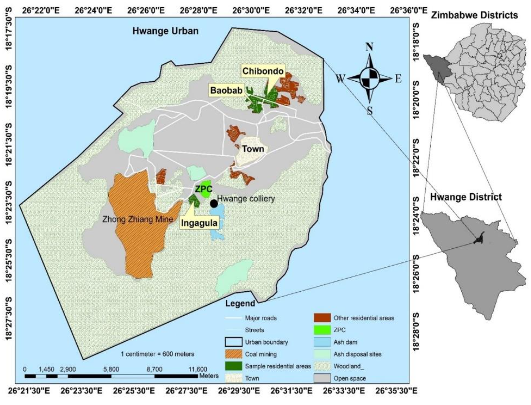Jazz music: From black pride to political consciousness to social change in the United States
Abstract
African Americans have been marginalised, discriminated against, and excluded from American society for centuries. First as slaves, but later when they gained emancipation, they remained relegated, differentiated, and discounted, in a range of areas, including in the political and economic spheres. Music has been a means to promote their greater inclusion in American society, drawing together and uniting all Americans through its power. While there have been links drawn between music and the African American struggle for equality, there has not been sufficient focus on the pivotal role that specifically jazz music has played in this regard. Jazz particularly has been a vehicle for promoting Black pride, political consciousness, and social change. This article argues that jazz has had a major effect on African American culture, society, and experience. Analysing the works of legendary jazz musicians James Brown, John Coltrane, Billie Holiday, and The Temptations, this article shows that jazz is not only as a catalyst for, but a driving force in, the fight for political freedom, as well as for economic empowerment, which is arguably still ongoing today.
References
[1]Street J. Music and politics. John Wiley & Sons; 2012.
[2]Oliver W. Black Males and Social Problems. Journal of Black Studies. 1989; 20(1): 15-39. doi: 10.1177/002193478902000102
[3]Marsh K. Music as dialogic space in the promotion of peace, empathy and social inclusion. International journal of community music. 2019; 12(3): 301-316. doi: 10.1386/ijcm_00002_1
[4]Abdullah L. The sounds of liberation: Resistance, cultural retention, and progressive traditions for social justice in African American music [Bachelor’s thesis]. The Faculty of the Graduate School of Cornell University; 2009.
[5]Burnim. African American Music. Routledge; 2014. doi: 10.4324/9781315857671
[6]Maultsby PK. Soul music: Its sociological and political significance in American popular culture. Journal of Popular Culture. 1983; (17)2: 51-60. doi: 10.1111/j.0022-3840.1983.1702_51.x
[7]Schuller G. Early Jazz: Its Roots and Musical Development. Oxford University Press; 1968.
[8]Gushee L. The Nineteenth-Century Origins of Jazz. Black Music Research Journal. 1994; 14(1): 1. doi: 10.2307/779456
[9]Stewart CJ. The evolution of a revolution: Stokely Carmichael and the rhetoric of black power. Quarterly Journal of Speech. 1997; 83(4): 429-446. doi: 10.1080/00335639709384196
[10]Joyce AJ. Afterword: Gil Scott-Heron: Larry Neal’s Quintessential Artist. In: Scott-Heron G (editor). So Far So Good. Chicago: Third World Press; 1990.
[11]Gioia T. The History of Jazz. Oxford University Press; 2011.
[12]Jones L. (Amiri Baraka). Blues people: Negro music in white America. Harper Perennial; 1963.
[13]Baskerville JD. Free Jazz. Journal of Black Studies. 1994; 24(4): 484-497. doi: 10.1177/002193479402400408
[14]Butterfield MW. Music analysis and the social life of jazz recordings. Current Musicology. 2002; 71-73.
[15]Ogren KJ. The Jazz Revolution: Twenties America and the meaning of jazz. Oxford University Press; 1992. doi: 10.1093/oso/9780195074796.001.0001
[16]Stephans M. Experiencing Jazz: A Listener’s Companion. Scarecrow Press; 2013.
[17]Anderson I. This is our music: Free jazz, the sixties, and American culture. University of Pennsylvania Press; 2012.
[18]Monson I. Freedom sounds: Civil rights call out to jazz and Africa. Oxford University Press; 2007. doi: 10.1093/acprof:oso/9780195128253.001.0001
[19]Schwartz J. Free Jazz. State University of New York Press; 2022. doi: 10.1515/9781438490328
[20]Coleman K. Free Jazz and the “New Thing.” Journal of Musicology. 2021; 38(3): 261-295. doi: 10.1525/jm.2021.38.3.261
[21]Ho F. How Does Music Free Us? “Jazz” as Resistance to Commodification and the Embrace of the Eco-Logic Aesthetic. Capitalism Nature Socialism. 2011; 22(2): 52-61. doi: 10.1080/10455752.2011.569354
[22]Hersch C. “Let Freedom Ring!”: Free Jazz and African-American Politics. Cultural Critique. 1995; (32): 97. doi: 10.2307/1354532
[23]DeVeaux S. Constructing the Jazz Tradition: Jazz Historiography. Black American Literature Forum. 1991; 25(3): 525. doi: 10.2307/3041812
[24]Berliner PF. Thinking in Jazz. University of Chicago Press; 1994. doi: 10.7208/chicago/9780226044521.001.0001
[25]Redmond SL, Robeson C. Haley-Redmond. “Missing Maestra: Meshell Ndegeocello’s We Insist!” Women and Music: A Journal of Gender and Culture. 2023; 27(1): 99-104.
[26]Sarkin J, Daly E. Too Many Questions, Too Few Answers: Reconciliation in Transitional Societies. Columbia Human Rights Law Review. 2003; 35: 661.
[27]Kirk-Duggan CA. Sacred and Secular in African American Music. The Oxford Handbook of Religion and the Arts. 2014; 498-521. doi: 10.1093/oxfordhb/9780195176674.013.036
[28]Martyn B, Hazeldine M. New Orleans Style. Jazzology Press; 1998.
[29]Ladd B. Salomé in the Jazz Age: Faulkner, The Marionettes, and Sanctuary. Mississippi Quarterly. 2019; 72(1): 25-48. doi: 10.1353/mss.2019.0000
[30]Jottar B. Zero Tolerance and Central Park Rumba Cabildo Politics. Liminalities: A Journal of Performance Studies. 2009; 5(4); 1-24.
[31]Titlestad M. Traveling Jazz: Themes and Riffs. Safundi. 2007; 8(1): 73-82. doi: 10.1080/17533170701295363
[32]Davenport LE. Jazz Diplomacy. University Press of Mississippi; 2009. doi: 10.14325/mississippi/9781604732689.001.0001
[33]Olwage G. Apartheid’s musical signs: Composing Apartheid. Witwatersrand University Press; 2008. pp. 35-54. doi: 10.18772/22008064563.6
[34]Rommen T. Some Cold Facts about Circuits and Circuit Breakers. Safundi. 2013; 14(4): 471-475. doi: 10.1080/17533171.2013.841062
[35]Sangarasivam Y. Nationalism, Terrorism, Patriotism. Springer International Publishing; 2021. doi: 10.1007/978-3-030-82665-9
[36]Constantine MG, Blackmon SM. Black Adolescents’ Racial Socialization Experiences. Journal of Black Studies. 2002; 32(3): 322-335. doi: 10.1177/002193470203200303
[37]Dougherty CK. The Coloring of Jazz: Race and Record Cover Design in American Jazz, 1950 to 1970. Design Issues. 2007; 23(1): 47-60. doi: 10.1162/desi.2007.23.1.47
[38]Tyson L. Learning for a diverse world: Using critical theory to read and write about literature. Psychology Press; 2001.
[39]Fuller HW. The Black Aesthetic. Doubleday. 1971; 3-12.
[40]Kofsky F. Black nationalism and the revolution in music. Pathfinder Press; 1970.
[41]Belwefi K. Rhythm as a Counter-cultural Political Instrument of Empowerment in James Brown’s ‘Say it Loud, I’m Black and I’m Proud.’ SSRN. 2024. doi: 10.31235/osf.io/n5xef
[42]Brown J. Say It Loud, I’m Black and Proud. A Soulful Christmas. King. Vinyl.; 1968.
[43]Schreiber B. Music is Power: Popular songs, social justice, and the will to change. Rutgers University Press; 2019. doi: 10.36019/9781978808157
[44]Rydell K, Bienvenu A. The Power of Protest Music: Exploring the Role of Songs in Social Change. Black History Bulletin. 2021; 84(1): 6-9. doi: 10.1353/bhb.2021.0014
[45]The Temptations. Message from a Black Man. Puzzle People. Gordy (Motown). Vinyl.; 1969.
[46]Miller V. Political Consciousness: A Perpetual Quest. Just Associates; 2002.
[47]Wellburn R. The Black power imperative. In: Gayler A (editor). The Black Aesthetic. Doubleday; 1971.
[48]Lewis N. The Social Background of the Black Arts Movement. Black Scholar. 1987; 18: 11-12.
[49]Coltrane JA. Live at Birdland. Impulse! Records. Vinyl.; 1964.
[50]Muhammad I. On John Coltrane’s “Alabama”. The Paris Review. 2020.
[51]Micucci M. Nov. 18, 1963 … John Coltrane Records ‘Alabama.’ JAZZIZ Magazine; 2016.
[52]Tucker M, Ellington D. The Duke Ellington Reader. Oxford University Press; 1995.
[53]Ellington D, Jackson M. Available online: https://www.youtube.com/watch?v=cInnyr5hlhE (accessed on 3 March 2024).
[54]Holiday B. Strange Fruit/Fine and Mellow. Commodore; 1939.
Copyright (c) 2024 Jeremy Julian Sarkin, Eryn Sarkin

This work is licensed under a Creative Commons Attribution 4.0 International License.
Authors contributing to this journal agree to publish their articles under the Creative Commons Attribution 4.0 International License, allowing third parties to share their work (copy, distribute, transmit) and to adapt it for any purpose, even commercially, under the condition that the authors are given credit. With this license, authors hold the copyright.










